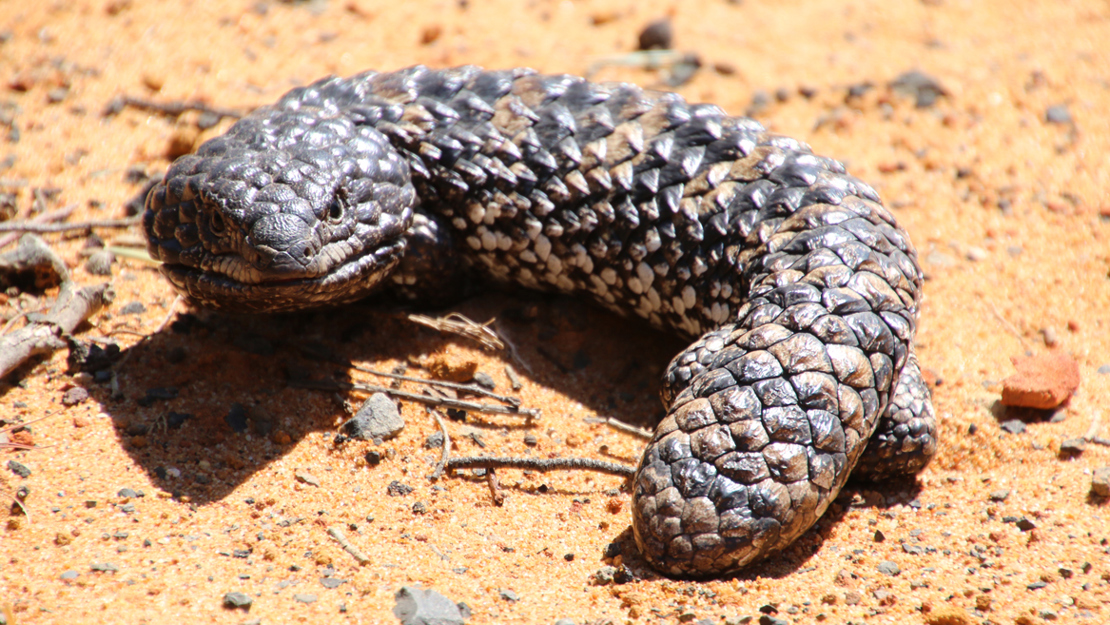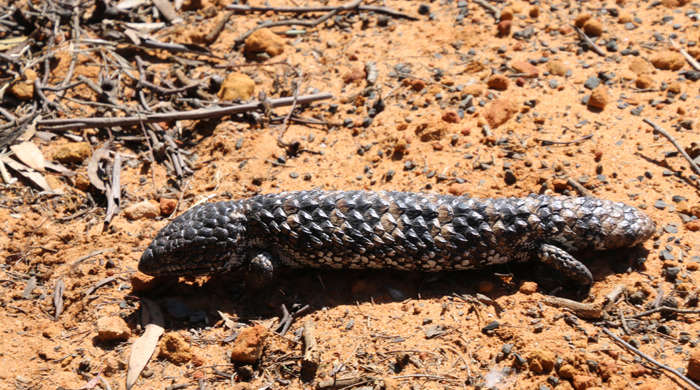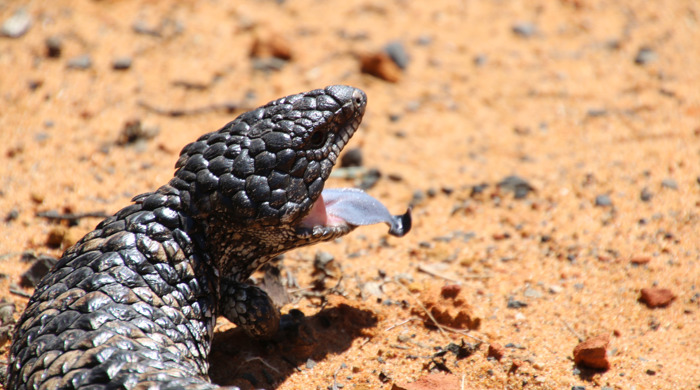Tiliqua rugosa
Shingleback lizard
Family: Scincidae
Origin: Australia

Regional Pest Management Plan (RPMP) status
- Hauraki Gulf Controlled Area Notice pest
- Whole region — Sustained control
General description
Lizard up to 40cm long, with large head, short blunt tail, large rough scales and a dark blue tongue. Dark brown colour, sometimes with yellow spots, and a pale underside.
What you need to know
To help protect our environment, you must not release any shingleback lizard within the Auckland region.
Habitats
Open habitats, grassland, shrubland, dunes.
Impact on environment
Preys on native invertebrates. May spread disease to native reptiles.
Control
Management
If you have pet shingleback lizards, make sure they’re securely contained to avoid accidental escapes. If you are no longer able to look after your pet shingleback lizard, find someone who is prepared to give it a lifetime home, or contact a relevant pet shop or animal rescue organisation to get it rehomed.
Never release a shingleback lizard into the wild – your pet may be unable to find the food and shelter it needs, and it also puts our native species at risk.
If you see a shingleback lizard in the wild, please report it to Auckland Council at pestfree@aucklandcouncil.govt.nz.





